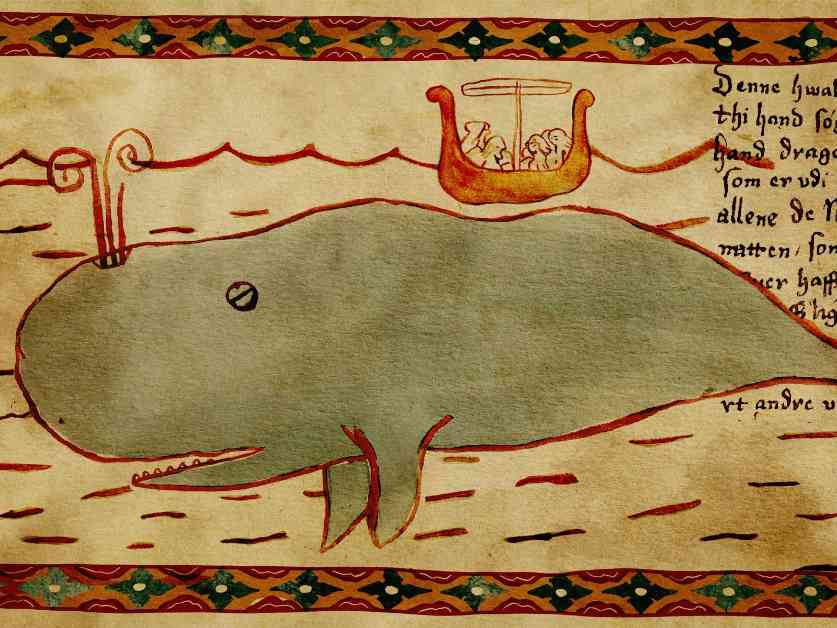In the fall of 1385, a man named Ólafur went fishing off the northwestern coast of Iceland and encountered a blue whale, the largest animal on record. Jón Guðmundsson, the poet and scholar who recorded Ólafur’s story, described blue whales as protectors of sailors and a valuable food source for medieval Icelanders. Blue whales were revered for their size and calm nature, making them a prized catch for hunters like Ólafur.
While Ólafur was unsuccessful in his attempt to hunt the blue whale, a group of travelers in Greenland later discovered a dead blue whale with an iron spearhead marked with Ólafur’s emblem embedded in its body. They consumed the whale to stave off starvation, highlighting the importance of whales as a source of sustenance in medieval times.
Vicki Szabo, an environmental historian, has been studying Icelandic texts and archaeological evidence to understand the relationship between Icelanders and blue whales. Evidence suggests that blue whales were a significant food source for Icelanders, with one whale yielding as much meat as 3,000 lambs.
Szabo’s multidisciplinary team is conducting research to uncover how medieval Icelanders hunted and harvested blue whales. Through DNA analysis and spectroscopy, they have identified a high prevalence of blue whale bones at archaeological sites in Iceland dating back to the 9th century. This challenges previous assumptions that Icelanders primarily hunted smaller whale species.
The team’s findings suggest that blue whales may have been more abundant and closer to shore in medieval times, leading to increased hunting activity. As climate conditions changed and industrial whaling began in the 20th century, blue whale populations shifted offshore, making them less accessible to hunters.
Despite the challenges of hunting and processing blue whales, medieval Icelanders likely relied on these massive creatures for food, tools, and other resources. The discovery of whalebones at archaeological sites like Hafnir in northwestern Iceland provides valuable insights into the hunting practices of early Icelanders.
As the research project continues, the team aims to unravel the mysteries surrounding Icelanders’ interactions with blue whales and shed light on the historical significance of these majestic animals in Icelandic culture. By studying ancient bones and textual records, researchers hope to paint a more accurate picture of human-whale relationships in the Middle Ages and understand how these interactions have shaped both historical and modern whale populations.






